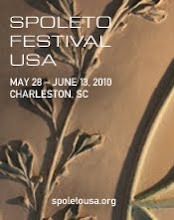
Columbia film maker Laura Kissel discovered a cotton field in Georgia and its long life became the subject of her 2005 film “Cabin Field.”
Kissel, an associate professor in the University of South Carolina art department, wanted to know more about what happen to the cotton once it was picked, baled and carted away by truck and ship. She had only been as far as the cotton gin nearby.
“I told (the landowner) I wanted to follow the cotton to its final destination,” she said recently, “and he told me I'd have to go to China to accomplish this. I got the idea for this film right there in the cotton gin in Arabi, Ga.”
 Kissel just returned from eight months in China where she has been working on the movie "Cotton Road."
Kissel just returned from eight months in China where she has been working on the movie "Cotton Road."She followed cotton (although not the cotton from south Georgia) as it arrived in ports, was taken to mills and then to factories where it was transformed into clothing, packed in shipping containers and shipped back to us in the U.S.
The story started on farms throughout South Carolina although it came to embrace cotton from all over the world.
In China she filmed and interviewed cotton field workers and those toiling in factories in the cities where they have moved by the millions.
“The real story is the story of migrant workers, who have come from the countryside to cities all over China in search of a better life,” said Kissel. “They are part of the largest migration of humans in history."
In an email from China early this summer, Kissel wrote, "I still have not been able to spend as much time with migrant workers as I wanted to. The reason is because they work all the time (7 days a week, 12 hours or more a day). It is next to impossible to meet up with them."
But since she was there so long, thanks to a Fulbright Fellowship, Kissel was able to spend time building trust with those she wanted to interview. Even if they were so busy they barely had time to talk they were willing to talk.
‘There is a weaving factory in Jiangsu where we have been filming,” Kissel said. “When we were there I brought photos of the South Carolina cotton harvest and the work
 ers I met in South Carolina and they ADORED the images. Several of the women we filmed with are from cotton farms and they couldn't believe how different U.S. cotton looks from Chinese cotton.
ers I met in South Carolina and they ADORED the images. Several of the women we filmed with are from cotton farms and they couldn't believe how different U.S. cotton looks from Chinese cotton.“The Chinese people I have met have been incredibly open about their lives and very interested in working with me.”
Spending all that time shooting and interviewing is just a small part of the process.
 It will be another 18 to 24 months before the film is finished. Kissel wants to have it on the film festival circuit in 2011.
It will be another 18 to 24 months before the film is finished. Kissel wants to have it on the film festival circuit in 2011."This is the biggest thing I've ever done."
For more about the film go to http://www.laurakissel.com/cottonroad/













sounds like it will be worth seeing.
ReplyDelete